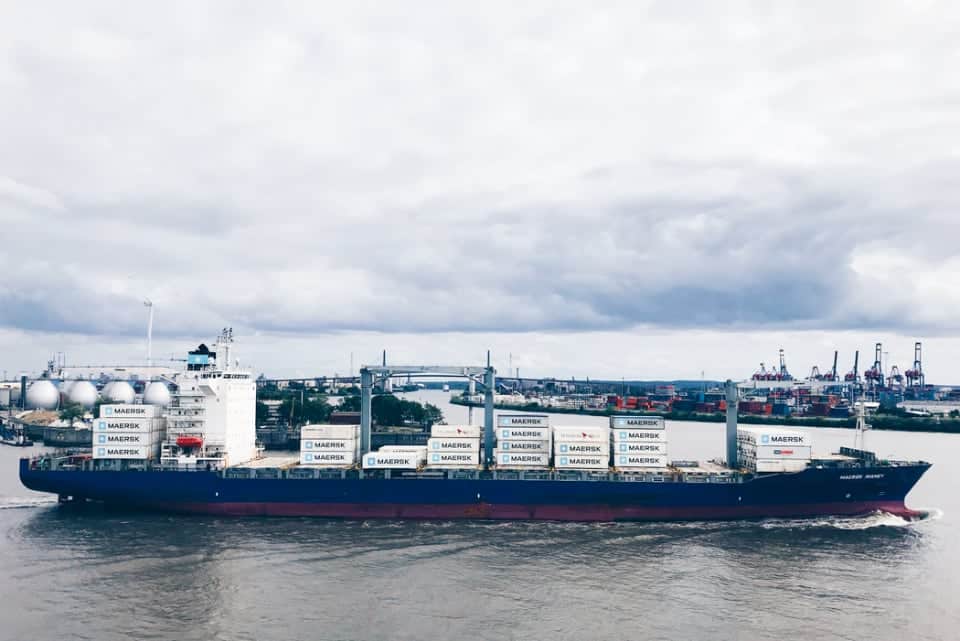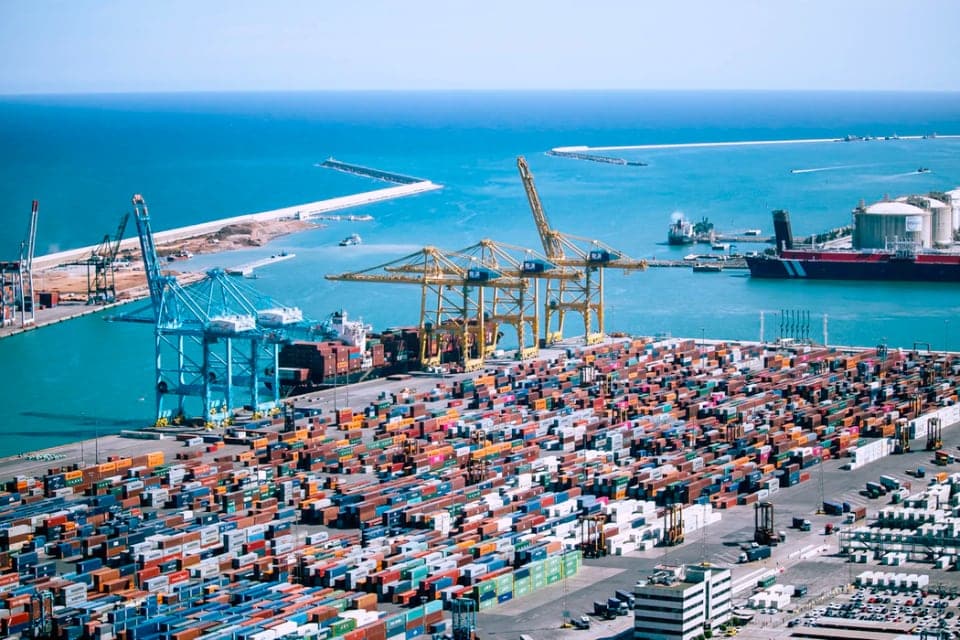Top 10 Largest EU Freight Ports

Which are the ten busiest freight ports in the European Union? Eurostat reveals the top 10 freight ports according to the latest available data. Of course, a slowdown in economic activity due to the effects of coronavirus could have an impact on international trade, and in particular on maritime freight.
In the second quarter of 2019, the ports of the European Union (EU27) handled 919 million tonnes of freight, an increase of almost 4% compared with the same quarter in 2018. In 2018, ports in the EU handled 3.6 billion tonnes of freight in total.
Of the top 10 freight ports in the EU, five are located on the North Sea and five on the Mediterranean. Let’s have a look at them.
With 441 million tonnes, Rotterdam handled more than twice as much freight as Antwerp (212 million tonnes) and almost four times as much as Hamburg (118 million tonnes), according to the latest data Eurostat published in the early April 2020. So, Rotterdam, Antwerp, and Hamburg complete the top 3 of the busiest freight ports in the European Union.
More than two thirds (69%) of the freight handled in Rotterdam was inwards transport, underlining Rotterdam’s central role as a hub for import to the EU. Almost half of the freight handled in Rotterdam was liquid bulk cargo. In contrast, Antwerp and Hamburg mainly handled container freight, with large containers accounting for 51% of the freight handled in Antwerp and 61% in Hamburg.
Amsterdam port handled 100 million tonnes freight and thus it is the 4th busiest in the European Union. Closely follows the Algeciras port (89 million tonnes), while Marseille port comes in the 6th place with 76 million tonnes. Le Havre, Valencia, Trieste, and Barcelona ports complete the top 10 with 65, 62, 57 and 57 million tonnes freight respectively.
The top 5 European ports saw an increase in port freight activity in the 2nd quarter of 2019 compared with the same quarter of the previous year. Europe’s largest port, Rotterdam increased by 1.0%. Amsterdam recorded the largest increase with 15.2% in the total gross weight of goods handled in this period. Furthermore, Antwerpen and Algeciras registered increases of 4.0 % and 5.2% respectively. During the same period, Hamburg remained stable.
In the container cargo segment, the EU’s top 5 ports recorded increases in the tonnes of containerized goods compared with the 2nd quarter of 2018. Algeciras showed the highest increase with 7.3%, closely followed by Antwerpen (+7.2%).
The gross weight of goods handled in the main EU-27 ports increased by 5.7% in the second quarter of 2019 compared with the previous quarter, reaching the 919 million tonnes. Compared with the 2nd quarter of 2018, the gross weight of goods handled in the main EU ports increased by 3.8%. The overall annual change also showed an increase of 3.0% in EU port activity in terms of the gross weight of goods handled compared with the previous year.
Inward movements of goods made up close to 60% of the total volume of goods handled in the main EU ports in the 2nd quarter of 2019, about the same as in previous quarters. Compared with the 2nd quarter of 2018, inward and outward movements of goods to/from the main EU ports increased by 5.5% and 1.5% in the 2nd quarter of 2019, respectively.
Compared with the previous quarter, the 2nd quarter of 2019 saw increases of 13.3% in the tonnage of roll on – roll off (Ro-Ro) units handled in the main EU ports, 10.4% in the volumes of other general cargo, 7.9% in the tonnages of liquid bulk goods and 6.2% in the volumes of containerised goods, while the tonnages of dry bulk goods saw a decrease compared with the previous quarter (-3.2%).
Compared with the corresponding quarter of 2018, all categories recorded an increase with the exception of dry bulk goods (-3.6%). The largest rises were observed for Ro-Ro mobile units (+12.9%), liquid bulk goods (+7.8%) and other general cargo (+6.1%).
The Netherlands, Italy, Spain and the United Kingdom were the largest maritime freight transport countries in Europe in the 2nd quarter of 2019, all handling more than 100 million tonnes of goods in their main ports. Compared with the same quarter of the previous year, these 3 first countries recorded an increase in main port activity in the 2nd quarter of 2019. The highest rise was for Italy (+13.7%), followed by Spain (+3.5%) and the Netherlands (+3.0%). In contrast, the United Kingdom recorded a fall of 2.2%.
Overall, 8 of the maritime EU Member States reported a decrease in the tonnes of goods handled in their main ports compared with the same quarter of the previous year, while 14 reported a growth. In relative terms, the largest decrease was recorded in Latvia (-11.8%). Malta, Romania, Italy and Bulgaria, on the other hand, each reported an increase in main port activity of more than 13% in this period.
Bring the best of the CEOWORLD magazine's global journalism to audiences in the United States and around the world. - Add CEOWORLD magazine to your Google News feed.
Follow CEOWORLD magazine headlines on: Google News, LinkedIn, Twitter, and Facebook.
Copyright 2025 The CEOWORLD magazine. All rights reserved. This material (and any extract from it) must not be copied, redistributed or placed on any website, without CEOWORLD magazine' prior written consent. For media queries, please contact: info@ceoworld.biz










